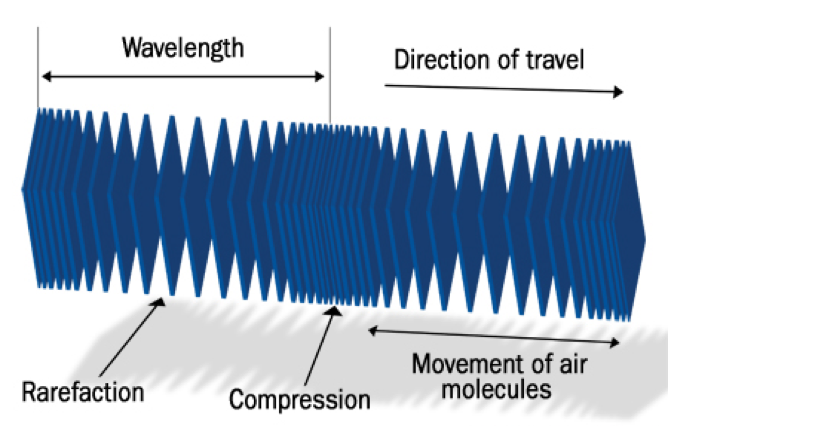Sign up for FlowVella
Sign up with FacebookAlready have an account? Sign in now
By registering you are agreeing to our
Terms of Service
Loading Flow



Longitudinal Wave

Sound waves are not transverse waves. They are longitudinal waves, created by some type of mechanical vibration that produces a series of compressions and rarefactions in a medium. Take a woodwind instrument, such as a clarinet. When you blow into a clarinet, a thin reed begins to vibrate. The vibrating reed first pushes against air molecules (the medium), then pulls away. This results in an area where all of the air molecules are pressed together and, right beside it, an area where air molecules are spread far apart. As these compressions and rarefactions propagate from one point to another, they form a longitudinal wave, with the disturbance in the medium moving in the same direction as the wave itself.